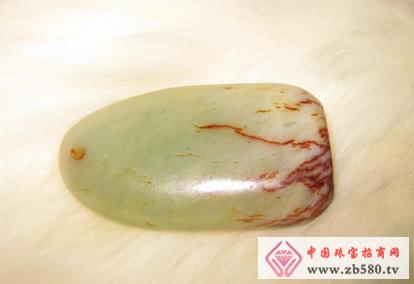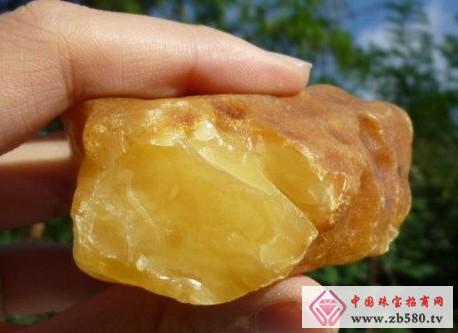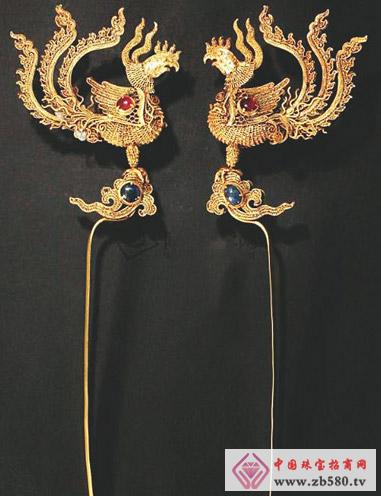
Chinese jade
Jade is the most typical jewellery material in China. Since ancient jade is an auspicious thing in the minds of Chinese people, Chinese people love jade, appreciate jade, play jade, and worship jade. Jade is not only a symbol of wealth and rights, but also a culture. In ancient times, jade was compared to a good character. The idea of ​​"gold is valuable, jade is priceless" is deeply rooted and has a long history.
What China calls "Jade" is nephrite, and jadeite is also called jadeite.
Soviet chemists once named nephrite as "Chinese jade", and can imagine the importance of jade to China. The so-called "China's four famous jade" is popular in the society: Hetian jade, turquoise, Xiuyan jade, Dushan jade, among which only Hetian jade and Xiuyan jade are mineralogy. According to the difference in the proportion of the ingredients, jade is divided into pure white sheep fat jade, white white jade, green white jade, sapphire, jasper, topaz and jade, and relatively rare sugar jade. Hetian jade produced in Xinjiang is a kind of soft jade with higher purity. It also has the strongest toughness in jade and is not easy to break. It generally has a glassy luster and a mineral specific gravity of 2.80-3.10. The color is pure white, foggy black and other colors due to the different mineral components.
Identification of jade jewelry should be seen in terms of color, transparency, hardness, brilliance and presence or absence of spots. The real jade is hard and wearable, crystal clear, and the color is pure and radiant. If it contains a trace of cracks, cotton and crepe, it can be identified as inferior. However, if there is a fake jade, the inside contains bubbles, the color is thin and stiff, the weight is light, the hardness is small, and the sound is crisp when knocking each other.
The identification of Xinyu focuses on the true and false varieties, the quality of the texture and the fineness of the carving. In addition to the value of its own texture, Laoyu also needs to refer to the historical value of its production age. The value of new and old jade can vary widely. Therefore, it is necessary to pay attention to two aspects of the old jade that is copied by the new jade. The surface of the old jade has a layer of oxidized jade, commonly known as "pachet", like the skin of autumn pear, and jade. The natural color has obvious differences, but the new jade does not. Secondly, from the perspective of carving, ancient jade is a symbol of rank and right, with many myths, flowers, birds and figures, such as dragons and phoenixes, while new jade There are many auspicious subjects.
Since ancient times, the Chinese have been exposed to emotions, and they have a good sentiment. Invest in Tao Li, reported to Qiong Jun. There is a saying in the Book of Songs, and the sentiment is combined with the beauty of jade. Gold and silver jewellery is a natural gift, and the craftsman knocks it, and it can be embedded. Landscapes, flowers, birds and insects, mythical immortals, are carved into it. The items on the projectile are full of retro elegance, and the lover’s hand is accompanied by the white head. Jewelry engraved with the heart of a lover, but also extended the ancient charm of the Chinese Millennium.

Emerald
Chinese jade only refers to nephrite, while hard jade is commonly known as "Jadeite". It is a rising star in traditional jade in China and a top product among all jade in modern times. The word "Jade" comes from the name of the bird. The feathers of this kind of bird are bright and beautiful. The male feather is red, the name is "ç¿¡", the female feather is green, and the name is "Cui", which is called "Jade". In the Ming Dynasty, after the introduction of Burmese jade into China, it was named "Jade".
The fine jadeite should have the fine texture, high transparency, even the glue, the fluorescing, the rigid foot and other characteristics. The jade quality is excellent, it is like a natural beauty, no need to apply makeup, it is beautiful. The appreciation of jade is viewed in terms of color, texture, transparency, engraving and weight. The color of high-quality jade is positive, yang, thick and uniform. The common jade in the market is white and green, while the gems green, emerald, green and green are the top grades, and the four are the most precious. As the saying goes: the layman looks at the color and the insider looks at it. Color is just the first step in appreciating jade. "Plant" refers to places other than green in jade, divided into glass, ice, glutinous rice, bean, porcelain, and other oil-green species. Among them, the glass is the best in jade, as clear and transparent as glass. In addition, unlike the value of jade, which is influenced by the age, the new jadeite is generally more valuable than the jadeite carved in the Qing Dynasty.

gold
It can be said that gold was the first precious metal used as a jewelry material. As a natural currency, gold is directly circulated in the early society, and its value is clear. The ancient Chinese understanding of gold began in the Shang Dynasty more than 3,000 years ago, when craftsmen made precious metals into ornaments for the nobles to enjoy. However, the manufacturing process is extremely simple, and the surface is mostly photo-free. In the Tang Dynasty, there were dozens of decorative techniques such as engraving, silking and inlaying in the production of gold ornaments. After entering the Ming Dynasty, the production of gold and silver jewellery began to pay attention to the soft and smooth lines, and attached the meaning of auspicious blessings to these ornaments. Later, the craftsmen of the Qing Dynasty used the homonyms of animals and plants such as flowers, birds, fish, and insects to convey the meaning of blessing.
Gold jewelry can be divided into pure gold and K gold from its gold content. The gold content of pure gold jewelry is above 99%, and the highest is 99.99%. Therefore, it is also known as “Jiujiujinâ€, “Full Gold†and “Red Goldâ€. K gold is to overcome the shortcomings of high gold price, low hardness, single color, easy to wear, and inconspicuous pattern. Some other metal elements are added to the pure gold to increase the hardness of the jewelry gold, change its color tone and reduce its Melting point, the title of "Karat", that is, "KaratGold", also known as "opening gold", "color gold." Depending on how much other metals are added, the K number of K gold jewelry is formed.
Today, rose gold is also popular in young markets.
The authenticity of gold can be identified by simple sputum: 掂 weight, see color, audition rhyme, soft and hard, use acid point. Specifically, it can be described as soft when the hand is bent, and it is easy to bend. It can be straight with a hand, and there will be traces when it is scratched with a hard object; it is thrown on the ground to make a "beep" sound, and the false sound is sharp, and It is higher than the true gold; the color is dark yellow, the excess red is pseudo-gold, the light color is silver, aluminum and other mixed gold; the same volume is really heavy, the fake is lighter; in case of rapid fire, it does not change color, it is quenched after burning red Into the water, the color does not change.

Red Coral
The red coral culture has a long history in China and the traditional culture of India and the Indian nation. Especially the nomadic peoples such as the Indian indigenous people and the Chinese Tibetans are more fond of red corals. They even use red coral as a bodyguard and prayer. "Blessed by the trust. In such a national culture, the red color of the coral is more rich, real and meaningful than any other color.
The value of red coral rises with the deepening of red. The most valuable of course is the bright red Aka coral, which is rich in color and has a glass luster. Followed by thick red sardine coral, peach pink Momo coral, and finally pink angel coral. The texture is exquisite, there are no holes or white flowers, and the excellent nature of the carving is also a very important quality consideration. The integrity and naturalness of red corals have greatly affected their value. Therefore, the price of red coral jewelry is mixed, and the complete natural red corals are hundreds of thousands of dollars. The cheap red coral used for wholesale is just the dyeing of coral fragments. . In addition to the integrity and natural identification criteria, as corals grow in size, their prices show an increasing trend in geometric progression. However, red corals, like pearls, are unstable carbonates and are not suitable for long-term collections.
Buying red corals requires identifying the stained corals, simply wiping the surface of the coral with a cotton swab and alcohol, and staining the coral if it fades. At the same time, natural corals have natural fine diagonal textures and natural flaws that appear to be scattered, while artificially processed corals exhibit uniform texture features.
Colorful Decorative Film,Seamless Decorative Film,Pocket Decorative Film,Seamless Pocket Decorative Film
NEW POWER INDUSTRIAL Co., Ltd , https://www.newpowerhk.com
![<?echo $_SERVER['SERVER_NAME'];?>](/template/twentyseventeen/skin/images/header.jpg)